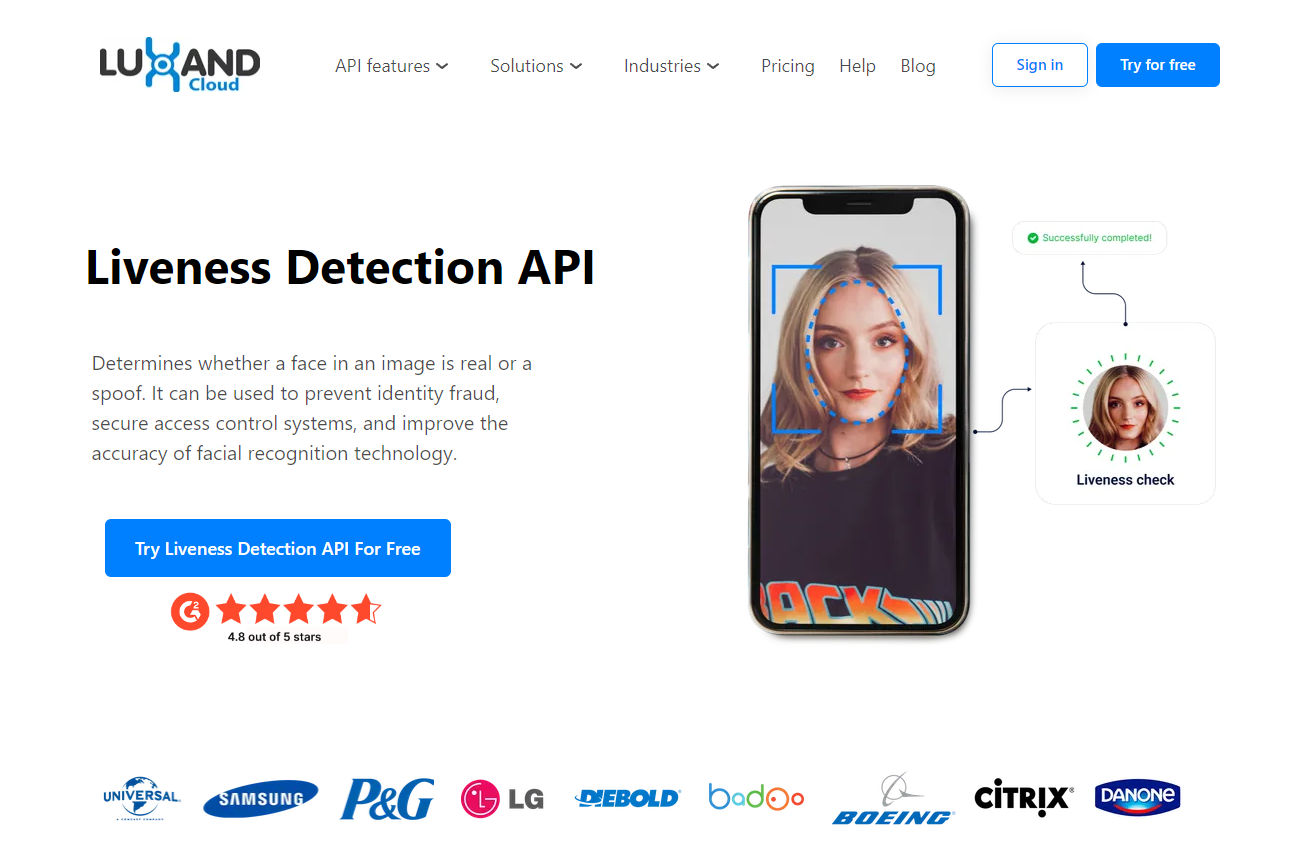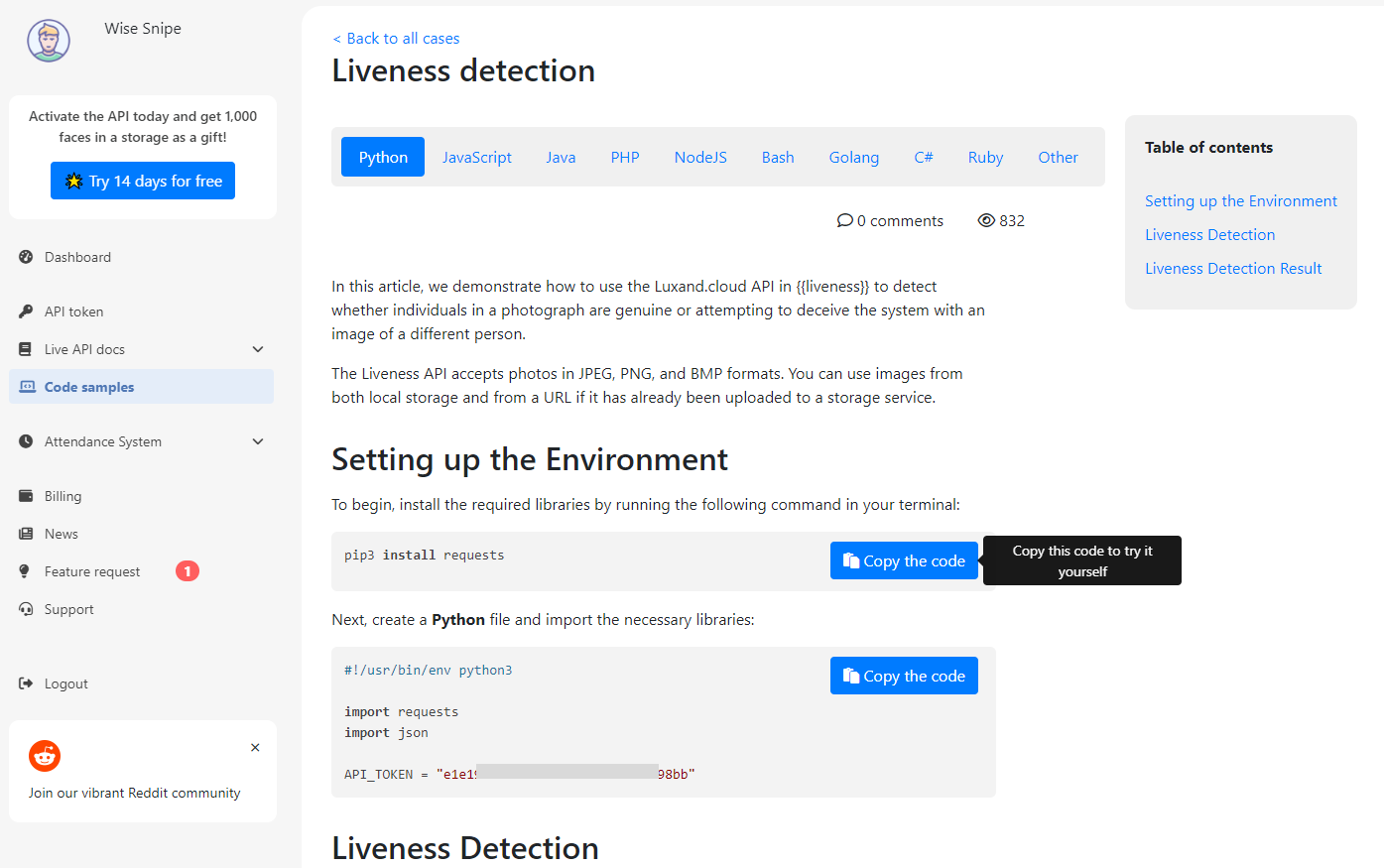
What is Liveness Detection and How does Liveness Detection Work?
In today’s digital world, where biometric authentication is becoming increasingly common, ensuring that these systems can reliably distinguish between real users and potential threats is more important than ever. This is where liveness detection comes into play. Liveness detection is a critical technology that verifies whether the biometric data being captured — such as a fingerprint or facial image—comes from a living person rather than a spoof or fraudulent source. As cyber threats evolve, understanding what liveness detection is and how it works is essential for anyone concerned with security, whether in banking, mobile technology, or access control systems. This blog post will delve into the fundamentals of liveness detection, exploring how it functions and why it’s a cornerstone of modern biometric security.
What is Liveness Detection?
Liveness detection is a crucial technology in the field of biometric security, designed to determine whether the biometric sample being presented, such as a fingerprint, facial image, or voice, is from a living person rather than a spoofed or fake source. As biometric authentication becomes more prevalent in our daily lives, from unlocking smartphones to accessing secure banking apps, the need for robust security measures to prevent fraud and unauthorized access has grown significantly. Liveness detection plays a pivotal role in ensuring that these systems can distinguish between a legitimate user and an impostor attempting to deceive the system using photos, videos, or other fabricated materials.
This technology works by analyzing various cues that can only be generated by a live human being, such as subtle movements, texture variations, or physiological responses. There are different approaches to liveness detection, ranging from passive methods that require no action from the user to active techniques that may ask the user to perform specific tasks like blinking or moving their head. The effectiveness of liveness detection is critical in maintaining the integrity of biometric systems, making it a key component in safeguarding personal and sensitive information in an increasingly digital world.
Types of Liveness Detection

Passive Liveness Detection
Passive liveness detection operates in the background without requiring any active participation or input from the user. Unlike active liveness detection, which might prompt users to perform specific actions—such as blinking, smiling, or turning their head—passive methods analyze biometric data in real time to detect signs of life. This could involve assessing subtle details such as skin texture, light reflection in the eyes, or micro-movements that are inherent to living beings.
The main advantage of passive liveness detection is its seamless user experience. Since it doesn’t require any additional steps from the user, it’s fast, unobtrusive, and ideal for applications where convenience and speed are paramount. However, this approach has its challenges as well. Because passive methods rely heavily on sophisticated algorithms to detect subtle cues, they can sometimes be less reliable against advanced spoofing techniques or in challenging environmental conditions. Additionally, ensuring the accuracy of passive liveness detection requires cutting-edge technology and constant refinement to stay ahead of potential security threats.
Overall, passive liveness detection offers a balance between security and user convenience, making it a popular choice in various biometric applications, though its effectiveness must be continually evaluated to maintain high standards of protection.
Active Liveness Detection
Active liveness detection is a prominent approach in biometric security that focuses on verifying whether a biometric sample, such as a facial image or fingerprint, is from a live person by requiring specific user interactions. Unlike passive liveness detection, which works in the background without user involvement, active liveness detection asks the user to perform certain actions, such as blinking, smiling, or moving their head, to confirm their presence. These tasks make it difficult for an impostor to use static images, videos, or other fake representations to fool the system.
The working principle of active liveness detection involves prompting the user to respond to a request, like turning their head or changing their facial expression, and then analyzing the response in real time. The system checks for natural and expected movements that indicate the presence of a living person. For example, it may verify that the user's eyes blink in a specific pattern or that their facial movements align with what’s expected when they follow a prompt. This interactive process helps ensure that the biometric data being captured is genuine and not a spoofed attempt.
One of the main advantages of active liveness detection is its robustness against spoofing attacks. Because the system requires a real-time response, it’s much harder for an attacker to deceive it using pre-recorded videos or static images. This makes active methods particularly effective in high-security environments. However, the trade-off comes in the form of user convenience. Since active liveness detection requires user participation, it can be perceived as less seamless or slightly intrusive compared to passive methods. Users may find the prompts disruptive, especially in situations where quick and effortless authentication is desired.
In summary, active liveness detection offers strong security benefits by directly engaging the user in the authentication process, making it difficult for fraudsters to bypass. However, balancing security with user experience remains a key consideration in the deployment of active methods.
How Liveness Detection Works
Liveness detection is an essential component of modern biometric systems, designed to ensure that the biometric data being used for authentication—such as a fingerprint, facial image, or voice sample—comes from a live person rather than a spoof or artificial representation. To achieve this, liveness detection relies on a combination of advanced technologies and sophisticated techniques that analyze various biological and behavioral cues.
The underlying technologies in liveness detection often include sensors, cameras, and software algorithms that work together to detect signs of life. For example, high-resolution cameras capture fine details of the face or fingerprint, while infrared sensors might be used to detect blood flow or body heat, both of which are indicators of a living person. These technologies are supported by complex algorithms that process the captured data in real-time, looking for specific patterns or anomalies that would distinguish a live subject from a static image, video, or fake object.
Several common techniques are employed in liveness detection to enhance its effectiveness. One popular approach is motion detection, where the system monitors natural movements, such as blinking or head tilting, to verify the presence of a live person. Another technique is texture analysis, which examines the skin’s surface at a microscopic level to detect the unique qualities of living tissue, such as elasticity and light reflection. 3D depth sensing is also widely used, where depth information is captured to ensure that the biometric sample has the expected three-dimensional characteristics of a real face or finger.
These techniques, when combined with the underlying technologies, form a robust framework for liveness detection, helping to prevent fraudulent attempts to bypass biometric systems. However, the effectiveness of liveness detection depends on the continual advancement and integration of these technologies, as well as their ability to adapt to evolving threats and challenges in biometric security.
Use Cases for Liveness Detection
Liveness detection has become a crucial technology across various industries, ensuring that biometric authentication systems are secure and reliable. Its ability to distinguish between real users and potential fraudsters is particularly valuable in sectors where security is paramount. Here are some key use cases where liveness detection is making a significant impact.
Banking and Financial Services
In the banking and financial services sector, liveness detection plays a vital role in protecting sensitive transactions and preventing fraud. As customers increasingly use online and mobile banking platforms, ensuring that the person initiating a transaction is the legitimate account holder has become more challenging. Liveness detection helps verify that the user’s biometric data—such as a face scan or fingerprint—is being provided by a live individual, not a spoofed image or video. This adds an extra layer of security, especially for high-risk transactions like wire transfers, online payments, and account access, making it much harder for cybercriminals to succeed in their attempts.
Mobile Device Security
With the rise of smartphones and other mobile devices, liveness detection has become integral to mobile device security. Devices that use facial recognition or fingerprint scanning for unlocking or authorizing transactions benefit from liveness detection by ensuring that only the legitimate user can access the device. This is particularly important as mobile devices often store sensitive personal information and are frequently used for secure activities like online shopping and banking. Liveness detection helps prevent unauthorized access even if someone manages to obtain a user’s biometric data through illicit means.
Access Control and Authentication
In both physical and digital spaces, liveness detection is increasingly used for access control and authentication. In secure facilities, biometric systems equipped with liveness detection ensure that only authorized personnel can enter restricted areas, preventing the use of stolen or duplicated biometric data. Similarly, in the digital realm, liveness detection is employed in systems that control access to sensitive data, online accounts, and confidential communications. By verifying that the biometric input comes from a live person, these systems greatly reduce the risk of unauthorized access and identity theft.
In all these use cases, liveness detection enhances security by ensuring that biometric systems are not easily fooled by fraudulent attempts, making it a critical tool in the ongoing fight against identity theft and fraud across various industries.
Luxand.cloud Liveness Detection API: A Powerful Tool for Developers and Businesses

Luxand.cloud's Liveness Detection API is a powerful tool designed to enhance the security of biometric systems by ensuring that the biometric data being processed comes from a live individual. This API is particularly valuable for developers and businesses looking to integrate liveness detection into their applications without building the technology from scratch.
The Luxand.cloud Liveness Detection API works by analyzing various characteristics of the biometric input, such as facial features, to detect signs of life. This might include subtle movements, changes in expression, or other dynamic aspects that are difficult to replicate with static images or videos. For instance, when integrated into a mobile app, the API can prompt users to perform simple actions like blinking or turning their head, verifying that the person in front of the camera is indeed a live human being.
One of the key advantages of using Luxand.cloud's API is its ease of integration. Developers can quickly incorporate it into existing systems or new applications, thanks to its straightforward documentation and robust support. This flexibility makes it ideal for a wide range of use cases, from securing financial transactions to protecting access to sensitive information in corporate environments.

Additionally, the API is designed to be highly reliable and efficient, capable of operating in various conditions, including different lighting environments and with diverse user demographics. This ensures that the liveness detection process is both accurate and user-friendly, providing a seamless experience without sacrificing security.
Overall, Luxand.cloud’s Liveness Detection API offers a comprehensive solution for businesses and developers looking to bolster their biometric authentication systems, providing the tools needed to guard against spoofing attempts and ensure that only live users can access protected services.
Conclusion
In conclusion, liveness detection is a vital technology in the realm of biometric security, ensuring that authentication systems can accurately distinguish between real users and fraudulent attempts. As biometric methods like facial recognition and fingerprint scanning become more prevalent in everyday applications—from banking and mobile devices to access control—liveness detection serves as a crucial safeguard against spoofing and unauthorized access.
By leveraging advanced technologies and techniques, such as motion detection, texture analysis, and 3D depth sensing, liveness detection enhances the reliability and security of biometric systems. Whether through passive or active methods, this technology adds an essential layer of protection, making it increasingly difficult for malicious actors to bypass security measures.
As the demand for secure, user-friendly authentication continues to grow, liveness detection will play an ever more important role in protecting personal information and ensuring the integrity of digital interactions. By understanding how liveness detection works and the different approaches available, businesses and developers can make informed decisions about integrating this technology into their security frameworks, ultimately creating safer, more trustworthy systems for users worldwide.
